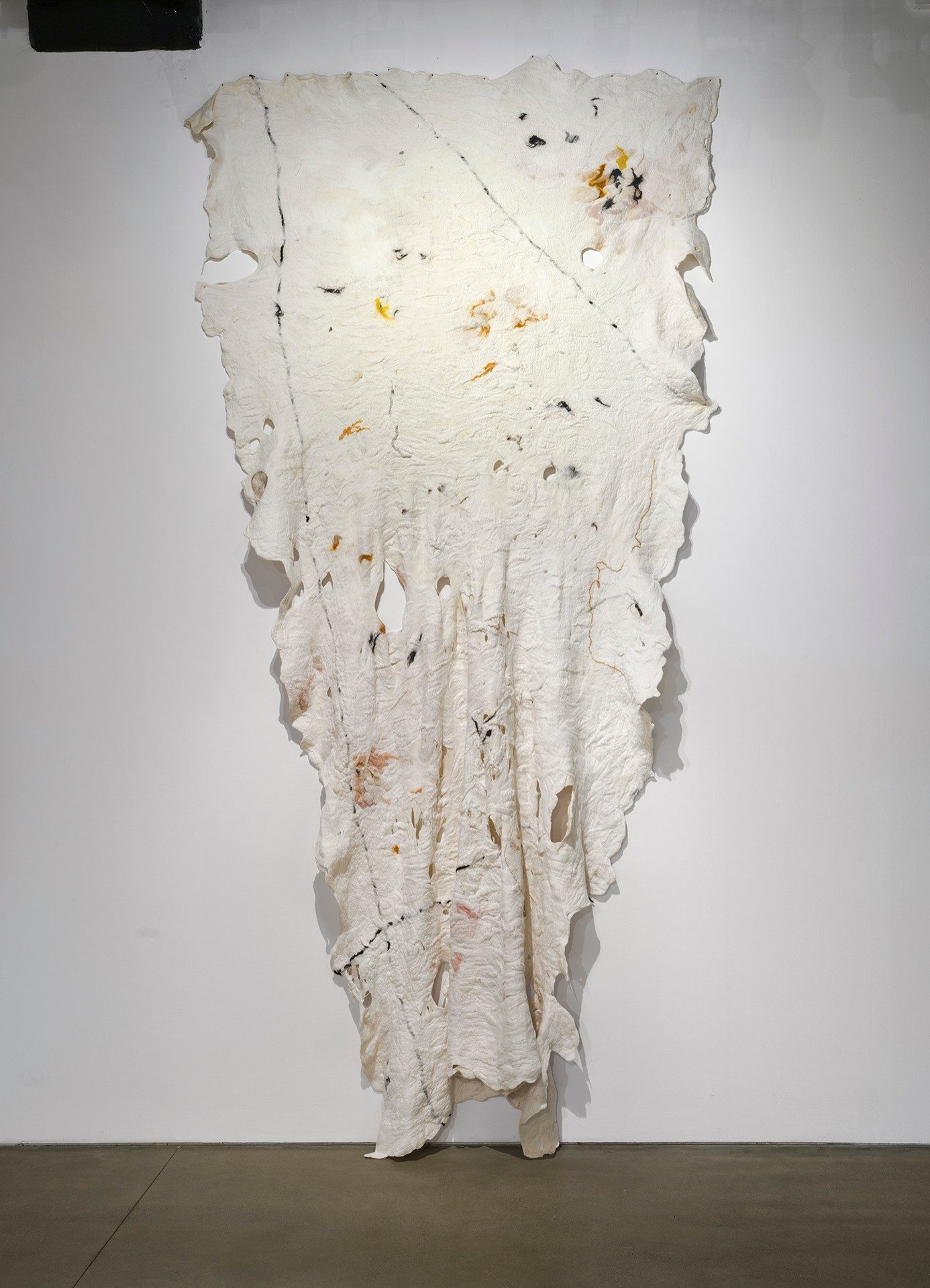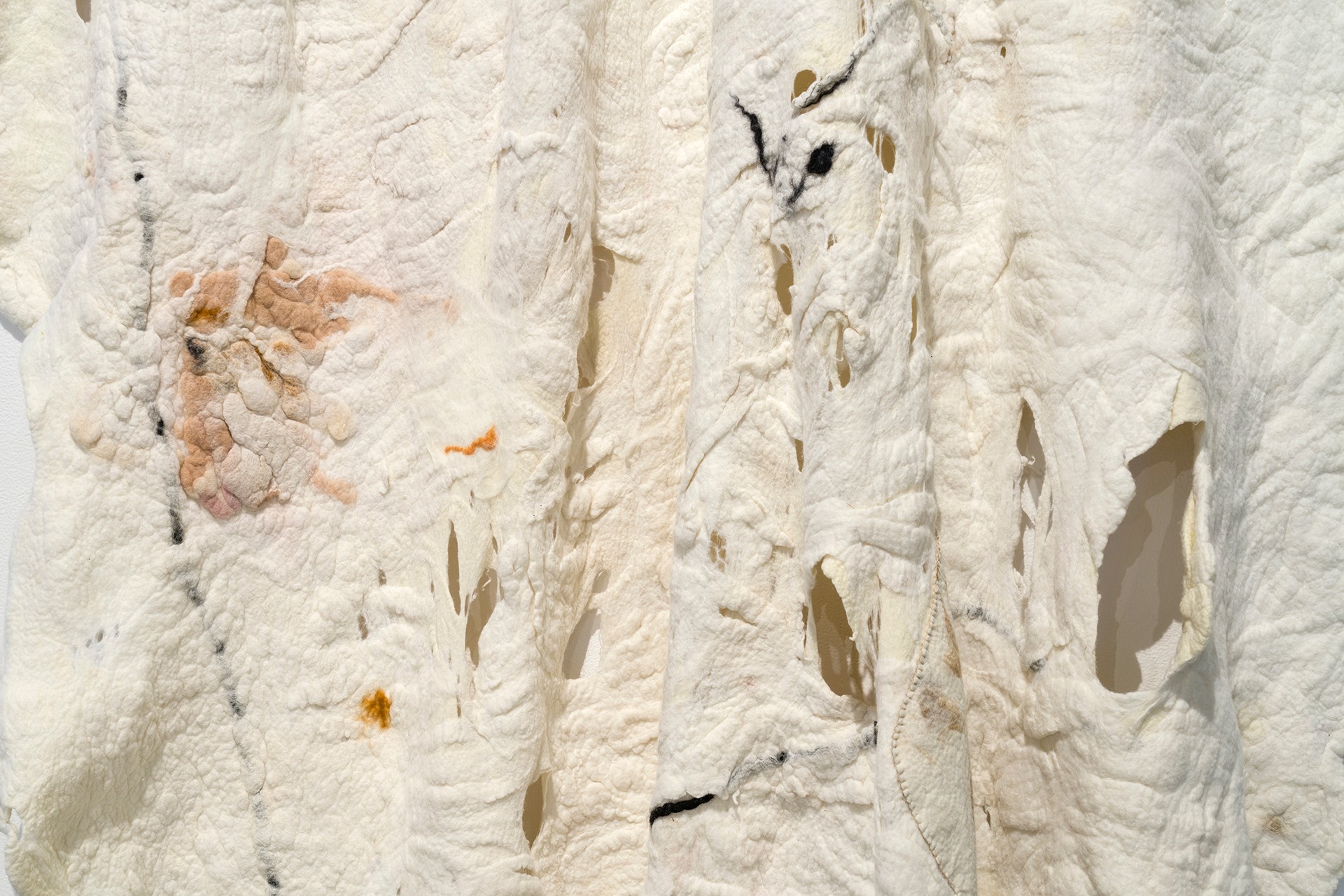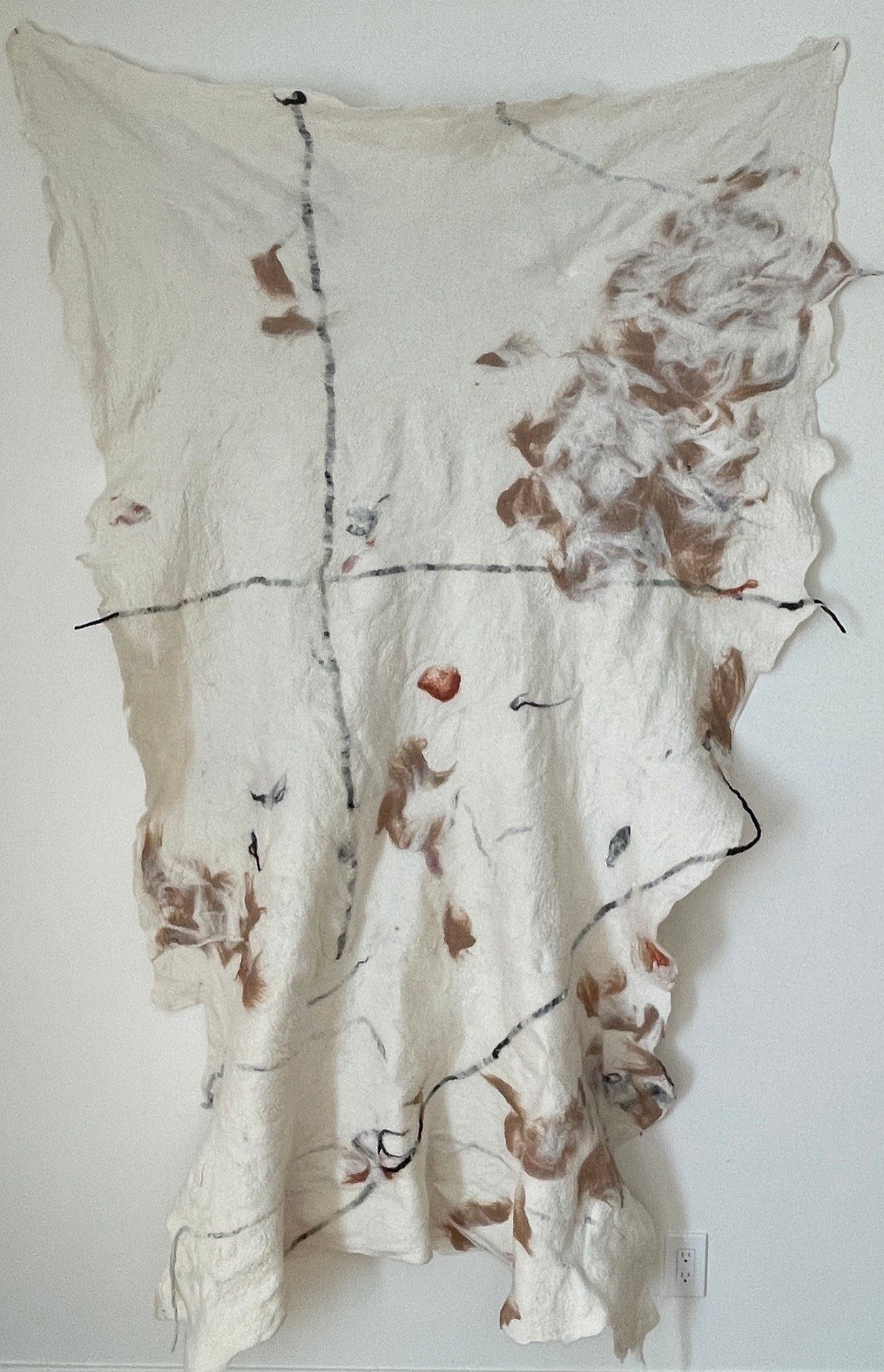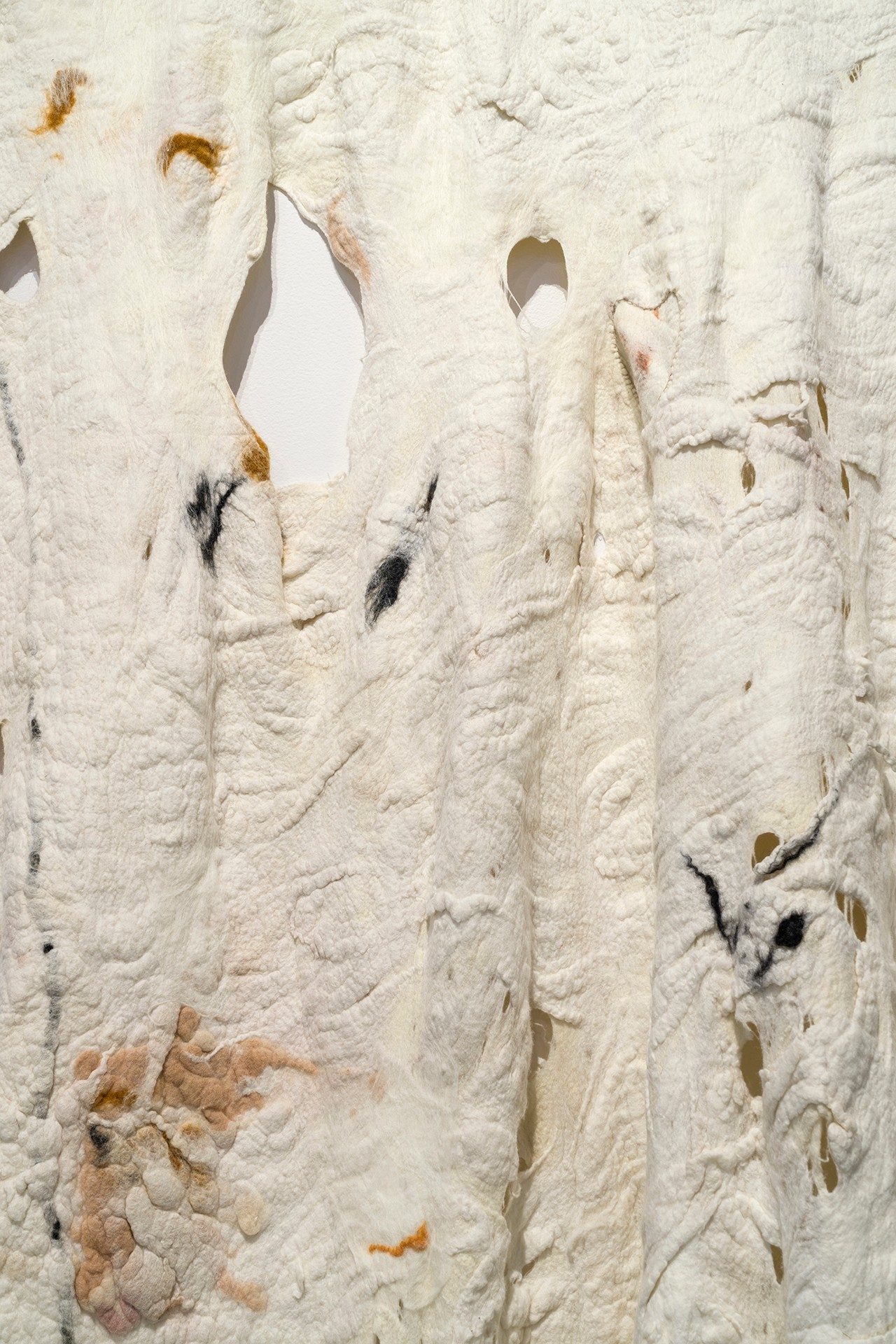JULIE POULIN
Her Woven Skin
2021

Photo by Guy L’Heureux
Merino wool, extracts of chestnut, walnut and madder, 7' X 15'
Artist statement
Because of its interdependence with our skin, touch becomes one of the essential senses for survival and the development of living beings. Touch allows for great sensations that are pleasant or painful. It generates not only a great variety of pleasures but also deep emotions. This piece represents all the scars I wear as a woman. Through a long and laborious hand-felting process, I explore the dynamic between the importance of physical contact and healing from damaging life experiences. The artwork Her Woven Skin recreates intense personal moments that I wish to share through the imagination of others, particularly by appealing to their sense of touch via the traces of uneven gestures.
 Photo by Guy L’Heureux
Photo by Guy L’Heureux
Artist’s biography
Born in 1988 in Quebec City and based in Montreal, Julie Poulin began her second year of a bachelor’s degree in Fiber and Materials Practices at Concordia University. Poulin creates sculptures and textile installations made of felt wool. Using her emotional records, she addresses the life paths that define us. Moreover, she investigates her provenance and identity as a survivor of a bumpy and unusual journey. Within her visual practice, she employs abstraction, the inherent affective language of texture, and the attraction of touch to capture the effect.
Essay
The Creative Process As Healing Practice
Author Sarah Demers
Artist Julie Poulin
Artwork Her Woven Skin, 2021
In the collective imagination, the blanket may symbolize protection and security. In times of physical or mental vulnerability, it is a reassuring second skin that protects against the coldness of one’s environment and life. Contrasted with the violence of wet felting, Julie Poulin’s work Her Woven Skin explores creative practice as a healing process.
This monumental textile installation is made of felted merino wool squares and measures 15 feet high by 7 feet wide in total. Despite its fibre structure, the texture is reminiscent of an animal’s supple skin; rather than the thick uniformity found in industrially manufactured felt. The fibres were also dyed with extracts of chestnut, walnut and madder, and the brown spots accentuate the tanned skin effect, suggesting a cowhide. The only hint of felting is perceivable in the brown pieces of virgin wool, looking like little fibrous clouds. For the artist, this piece is a testimony of “all the scars [she] bears as a woman (…) and how [she] has “sewn” them with perseverance, diligence, passion, care and emotional intelligence (…).”1 Thus, the object cannot be dissociated from its creative method, as it gave all its meaning.
The intimate relationship between the final result and the artistic process is undeniable. Indeed, the repetitive nature of the wet felting process turned out to be a contemplative space for Poulin, a “bubble where reflections [can] take place.”2 From there, she reflected on the similarities between felt and tanned skin, recalling her father’s Algonquin Nipissing heritage. Thus, the material took on a symbolic connotation, as a kind of “second skin”3 that physically and metaphorically bore the scars left by “the physical contact and the wear and tear of life stages.”4 Unconsciously, through its production and presentation, this work exteriorized old wounds to which the artist had become accustomed. The outcome, particularly soft and comforting, contrasts with the exhausting and brutal character of felting. To aggregate the fibres and form the textile, it is necessary to “rub, tap, beat”5 the animal fibre. The technique thus evokes Poulin’s arduous process to feel whole again after having to experience “intense personal moments.”6 The act of cutting the fabric and then stitching the pieces together is as much a testament to the pain caused by these experiences embodying a symbolic act of reparation.

The technique thus evokes Poulin’s arduous process to feel whole again after having to experience ‘intense personal moments.’
Her Woven Skin is, on many levels, a work about healing. Not only does this piece allow Poulin to embark on a personal and intimate journey to reconcile her feelings and experiences, but it also opens to a shared intimacy with others. Here, the public is invited to contemplate the ancient wounds they each carry and to share them.
- Julie Poulin, « Her Woven Skin » (Statement, September 21, 2021).
- Julie Poulin in conversation with the author, July 1, 2021.
- Ibid.
- Julie Poulin, « Her Woven Skin » (Statement, September 21, 2021).
- Julie Poulin in conversation with the author, July 1, 2021.
- Julie Poulin, « Her Woven Skin » (Statement, September 21, 2021).

Photo by Guy L’Heureux
Author’s biography
Sarah Demers is a fourth-year Visual Arts student at Concordia University. Her multidisciplinary practice includes mixed media, sculpture and textile art. Demers is interested in the role of storytelling in creating personal and individual realities and sees creative processes as a method of knowing oneself and others. After her Bachelor, she plans to deepen her exploration of art’s transformative and restorative qualities by obtaining degrees in psychology and art therapy. Demers’ works and essays appear in several publications, including the Concordia Undergraduate Journal of Art History (CUJAH) and Pica Magazine.
